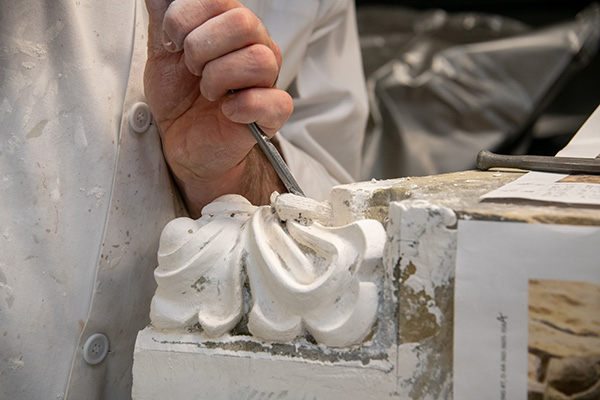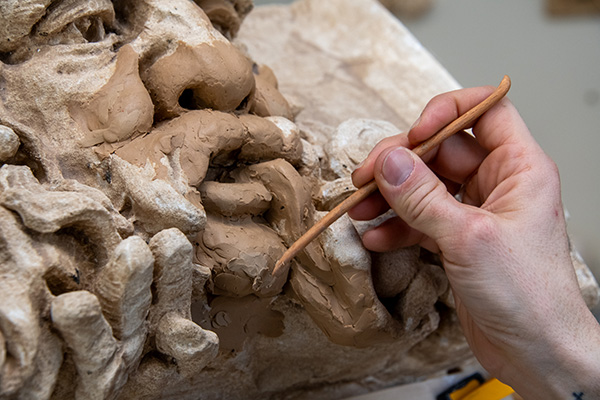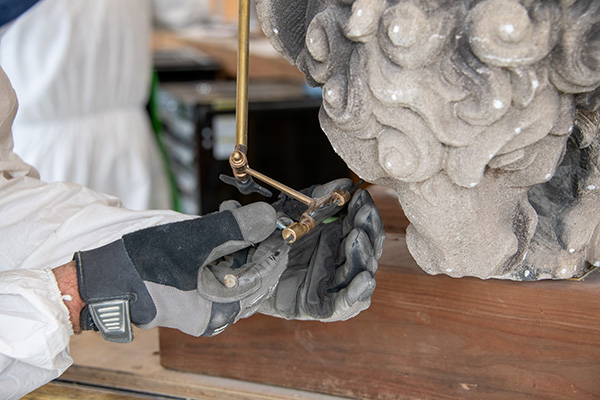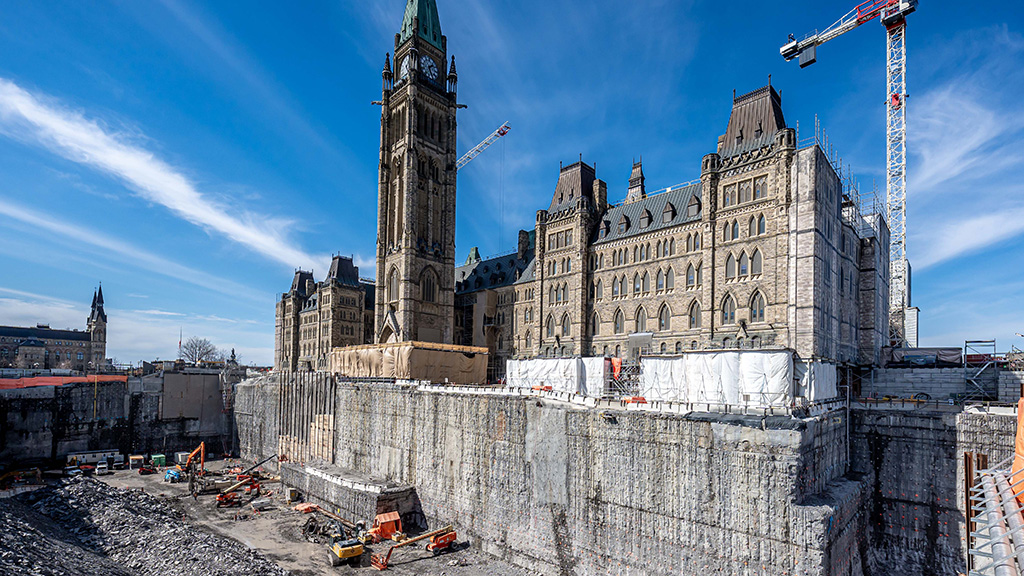A team of sculptors has been working to preserve the damaged and eroded sculptures on the exterior of the façade of the Centre Block building on Parliament Hill in Ottawa.
Restoring the building’s stonework is part of the larger Centre Block rehabilitation project, the largest, most complex project to rehabilitate a heritage building ever in Canada.
“There’s all kinds of different sculptures: wood sculptures, plaster sculptures, some metal works that would be considered sculptures and of course stone sculptures,” Dominion Sculptor John-Philippe Smith told the Daily Commercial News.
“In following heritage guidelines, its focus is really to preserve these as best as possible to ensure that original historic fabric remains intact. Sometimes, particularly on the exterior, particularly with stonework, those sculptures have effects from weathering where they deteriorate. We’re called upon to do some repairs and sometimes replacements.”

Telling the story of Canada’s past
The sculptures are pieces of art, but they also tell the story of the country’s past. The style of the sculptural elements is gothic revival.
“Any kind of little figures or creatures would fall under the umbrella of grotesques, which some people mistakenly call gargoyles,” Smith pointed out. “Along with grotesques you’ll find flora and fauna that’s mixed in there.”
The team has replaced close to 10 sculptures so far and is anticipating there might be up to 40 replacements.
“The final decisions are made once the scaffold is up in these locations and then myself, along with conservators, will go and have a real close look at them to determine whether or not they really are deemed to be full replacements or not,” said Smith.
The team will look at different levels of interventions, starting from the least invasive to the most invasive, which would be a full replacement.
“A full replacement usually happens typically if there’s structural integrity issues with the stones themselves,” said Smith. “First and foremost, they’re architectural elements that then have a design added to them. If that foundational architectural element is in a state that it’s falling apart then that would kind of lead us to the possible replacement. Then if the piece is quite ornate and has deteriorated to such a point that it’s not legible anymore that is also a factor.”
His team is typically called in when a full replacement is required.

“In that case we would either go to a site and take a mould or a copy of the piece and pour it in plaster in our studio so we have an exact copy of the deteriorated element,” Smith noted. “Then, based on either archival photographs or inspiration from pieces that are nearby, we’ll rebuild the missing elements in clay. Now we’ll have a three-dimensional model that’s a full representation of what we want to carve. Then we’ll cast it in plaster to get a solid copy. That’s known as a maquette and that then goes to the stone carvers and the stone carvers will then replicate that piece in stone.”
When architect John Pearson designed the Centre Block building the idea was not to include carvings on the interior of Parliament.
“What was left at the time was just blank blocks that were earmarked for future carvings,” Smith explained. “The idea was that there would be an iterative, continual carving program that would pass from generation to generation and tell the story of Canada as it developed over time. On the interior there were close to 1,000 blocks that were earmarked for stone carving. Subsequently, generations of carvers had left their mark with most of the works being completed in the ‘50s, ‘60s, ‘70s.
“There were large teams that would come in at night and they would carve all night long and in the morning they would tear down their scaffold,” he added.
Approaching the 1980s, they started to run out of blocks.
“There was probably around 200 blocks left at that time and a lot of them were quite small and in hard-to-reach locations so the program kind of slowed down a little bit,” he said. “We are looking for new spaces to add new canvases for the continuation of the program. This is where the Parliamentary Welcome Centre (part of the Centre Block project) is quite interesting to look at and consider for future storytelling.”

The future of Centre Block
In terms of the overall project, director general of the centre block rehabilitation project, Jean-François Robert, said a bit more than half of the design is currently complete and construction is well underway.
The construction is divided in three phases: demolition, abatement and excavation.
“There’s still a year or two left before we can say that we are going to be in rebuild mode,” Robert stated.
There is the actual building, which is undergoing a heritage rehabilitation, but there is also the new underground welcome centre facility, he added.
“As soon as this fall 2024 we will be starting to pour some concrete and do some foundation work,” he said. “There are even more tower cranes that are coming right in the hole. There is a huge hole right now in the front of the building so were going to start construction in there in the next year or so.”
The overall project is targeting completion for 2030/2031.
Follow the author on X/Twitter @DCN_Angela.





Recent Comments